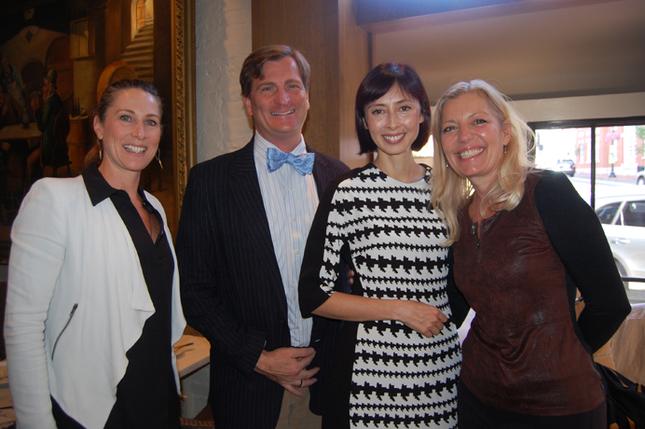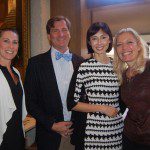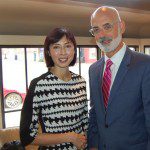Melissa Chiu: ‘The Hirshhorn Wants to Lead the Conversation’
By • October 23, 2014 0 2541

Melisssa Chiu walked up to the podium gingerly.
“I’ve only been here two weeks,” said the new director of the Hirshhorn Museum and Sculpture Garden. “People were asking me if I really wanted to do a talk and that maybe I should get settled in first before I tackled something like that.”
Chiu looked fresh and undaunted as she faced an enthusiastic audience at the Georgetowner’s monthly Cultural Leadership Breakfast at the George Town Club Oct. 9.
“Maybe it’s because I was born in Australia, but I thought it seemed like a good idea, to see for myself, and to present myself and a little bit of what’s happening at the Hirshhorn.”
Chiu succeeds director Richard Kashalek, who resigned a year ago. His tenure included the controversial Seasonal Inflatable Structure project.
“I think the Hirshhorn is an exciting opportunity,” said Chiu, who made a stellar reputation as director and senior vice president for global arts and cultural programs at the Asia Society Museum in New York since 2004 before being named the Hirshhorn director. “It’s an ideal place to explore contemporary art, and global art and modern art in relation to technology.”
“The way art is made, the way it’s communicated, the kind of art that is made is changing rapidly, every day, it’s truly a global kind of thing, and that’s what I’ve done at the Asia Society Museum,” she said. “What happens in China is as important as what happens here, and that kind of environment—when people not only talk about art on their iPad, but make art on a tablet—is very is very conducive to practicing cultural diplomacy.”
She talked about mounting an exhibition around the time of the Olympics which were held in Beijing. “It was focused on the art of the Chinese Cultural Revolution,” she said. “Now, that for a long time was a subject that was simply not dealt with in China—we had talked with artists whose work was hidden away during that time. “ Nevertheless, in spite of the fact that officialdom in China had decreed that that period would not be mentioned, Chiu’s exhibition—“Art and China’s Revolution”, was hugely successful.
“I think art in China has always been between antiquity and modern art,” she said. “I think contemporary art—not just contemporary Chinese art—is about having direct relationships with contemporary artists.”
“My parents were Australian and Chinese, and I grew up in Australia,” she said. “So, I think I come by globalism naturally.”
She is known to be a great fundraiser, networker and innovator, which is probably a boon for the sometimes troubled Hirshhorn Museum and Sculpture Garden. She comes loaded with charm, a self-deprecating sense of humor, global experience, an appreciation of the opportunities that are inherent in a rapidly changing world. “It’s not just about sculpture and painting, it’s about the opportunities technology presents in ways of making new art, it’s about sharing those experiences. Today, you can learn about what’s going on in China or Pakistan, in a second, and I think a museum like the Hirshhorn can be a leader in recognizing those opportunities.” She recalled that she grew up in Australia when the Internet didn’t have a name. “Now, look where we are,” she said,
“Art historians are looking at contemporary art with a broader social, political and cultural trajectory and context,” she said. “The Hirshhorn has always had an impressive collection—I love the sculpture garden, and we need to build on what’s there, what the site and the building offer in terms of displaying art, the kind of art that fits here, we’re going to be building broader public programs like our After Hours events, we’re looking to the young audience of what they call millennials, we should have exhibitions that look to the future, and be leaders of conversations about innovation.
“Basically, we have a culture that is constantly being shared through our technological tools, and that makes for exciting possibilities, for challenging art,” she said, pointing to the upcoming exhibition “Days of Endless Time,” which includes 14 installations.
“Right now though, I’m looking for a house and schools,” Chiu, who has a four-year-old daughter, said. “My trustees tell me that I must move to Georgetown.”
- Samira Farmer and Reid Dunavant of Doyle Auctioneers and the Hirshhorn’s Melissa Chiu and Sonya Bernhardt of The Georgetowner. | Robert Devaney



